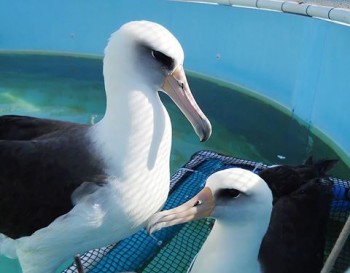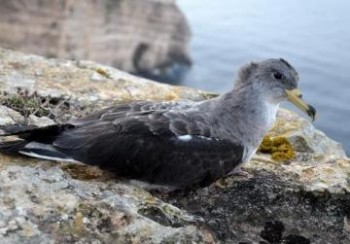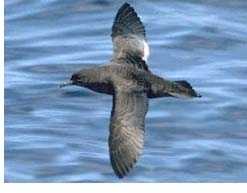Bird Island lies 4.5 km off the south-western coast of West Falkland, Falkland Islands (Islas Malvinas)*. The 120-ha island is largely covered in dense Tussac Grass Parodiochloa flabellata. Part of the coastline consists of 30-70-m high cliffs; the highest point is c. 110 m.

Bird Island
The Black-browed Albatross Thalassarche melanophris is the only ACAP-listed species that breeds on the island. Population estimates are 10 200 pairs in 2000/01 (ground count), and 15 525 pairs in September 2006 and 15 719 pairs in September 2010, both counted from aerial photographs. Other procellariiforms present are Thin-billed Prion Pachyptila belcheri (in their thousands), Common Diving Petrel Pelecanoides urinatrix and Sooty Shearwater Puffinus griseus (20 pairs). Grey-backed Storm Petrels Garrodia nereis may also breed.
South American Fur Seals Arctocephalus australis breed in two colonies, one very large. Bird Island is free of introduced mammals and shows no signs of fires or grazing by domestic stock. However, albatross (and penguin) eggs were collected for human consumption in the past. Guarding against fire is regarded as a high priority.
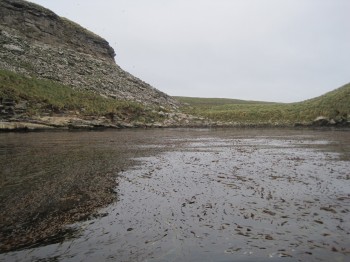

Views of tussock-covered Bird Island, Black-browed Albatrosses breed among the vegetation
Photographs by Sarah Crofts
The island is a National Nature Reserve designated in 1969 and a BirdLife International Important Bird Area for its albatross and Southern Rockhopper Penguin Eudyptes chrysocome (10 524 pairs in 2010) populations.
With thanks to Sarah Crofts and Ian Strange for photographs and comments.
Selected Literature:
Baylis, A.M.M., Wolfaardt, A.C., Crofts, S., Pistorius, P.A. & Ratcliffe, N. 2013. Increasing trend in the number of Southern Rockhopper Penguins (Eudyptes c. chrysocome) breeding at the Falkland Islands. Polar Biology 36: 1007-1018.
Catry, P., Forcada, J. & Almeida, A. 2011. Demographic parameters of Black-browed Albatrosses Thalassarche melanophris from the Falkland Islands. Polar Biology 34: 1221-1229.
[Falklands Conservation] 2006. Important Bird Areas of the Falkland Islands. London: Falklands Conservation. 160 pp.
Huin, N. & Reid, T. 2007. Census of the Black-browed Albatross Population of the Falkland Islands. Stanley: Falkland Conservation,
Strange, I.J. 2008. Aerial Surveys of Black-browed Albatross Thalassarche melanophris: the Methodology Employed and Comparisons with Surveys Carried out in 1986-2005-2006 and 2007. New Island: Design in Nature & Falkland Islands Wildlife. 59 pp.
Strange, I. & Strange, G. 2011. Black-browed Albatross Thalassarche melanophris. Aerial Photographic Survey Methodology: Advantages over Ground Surveying in the Falkland Islands. Results and Comparisons with Surveys in 2005 and 2010. Stanley: New Island Conservation Trust. 30 pp.
Wolfaardt, A.[C.], Rendell, N. & Brickle, P. 2010. Falkland Islands Implementation Plan for the Agreement on the Conservation of Albatrosses and Petrels (ACAP): Review of Current Work and a Prioritised Work Programme for the Future. Stanley: Falkland Islands Government. 57 pp.
Woods, R.W & Woods, A, 1997. Atlas of the Breeding Birds of the Falkland Islands. Oswestry; Anthony Nelson. 190 pp.
Woods, R., Ingham, R. & Brown, A. 2006. Falkland Islands. In: Sanders, S. (Ed.). Important Bird Areas in the United Kingdom Overseas Territories. Sandy: Royal Society for the Protection of Birds. pp. 99-162.
John Cooper, ACAP Information Officer, 01 April 2015
*A dispute exists between the Governments of Argentina and the United Kingdom of Great Britain and Northern Ireland concerning sovereignty over the Falkland Islands (Islas Malvinas), South Georgia and the South Sandwich Islands (Islas Georgias del Sur y Islas Sandwich del Sur) and the surrounding maritime areas.
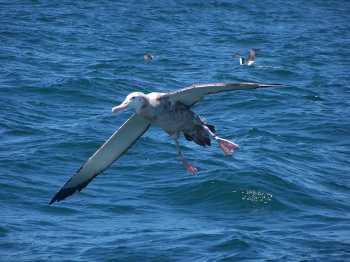

 English
English  Français
Français  Español
Español 
